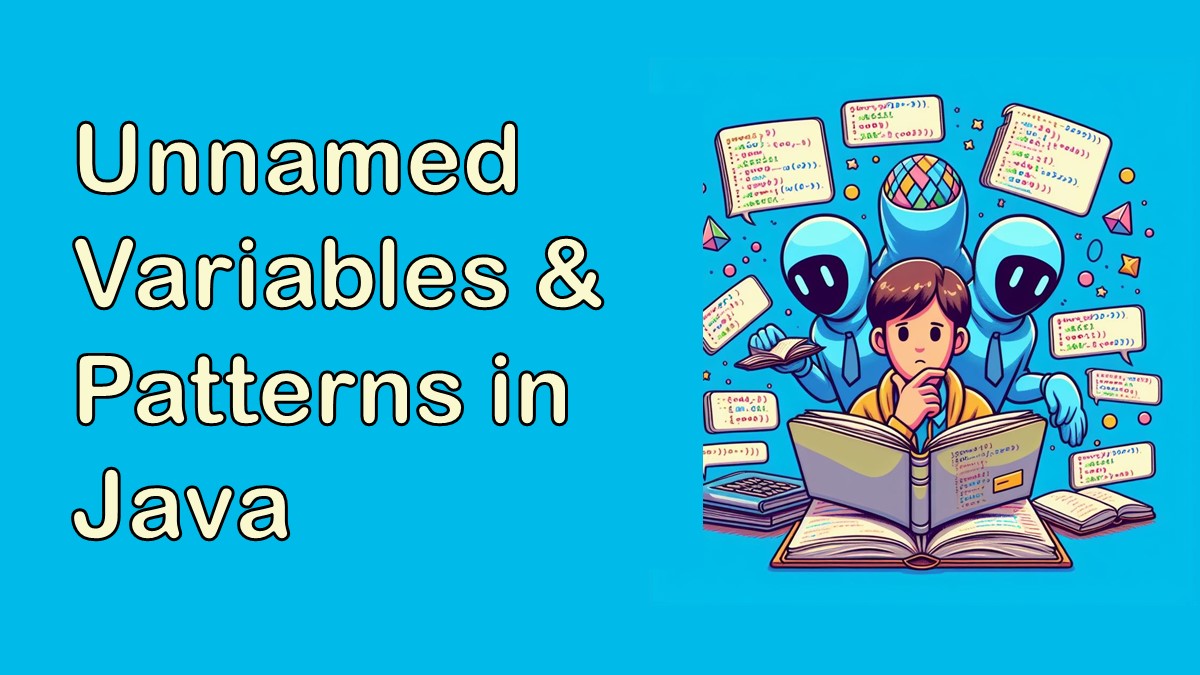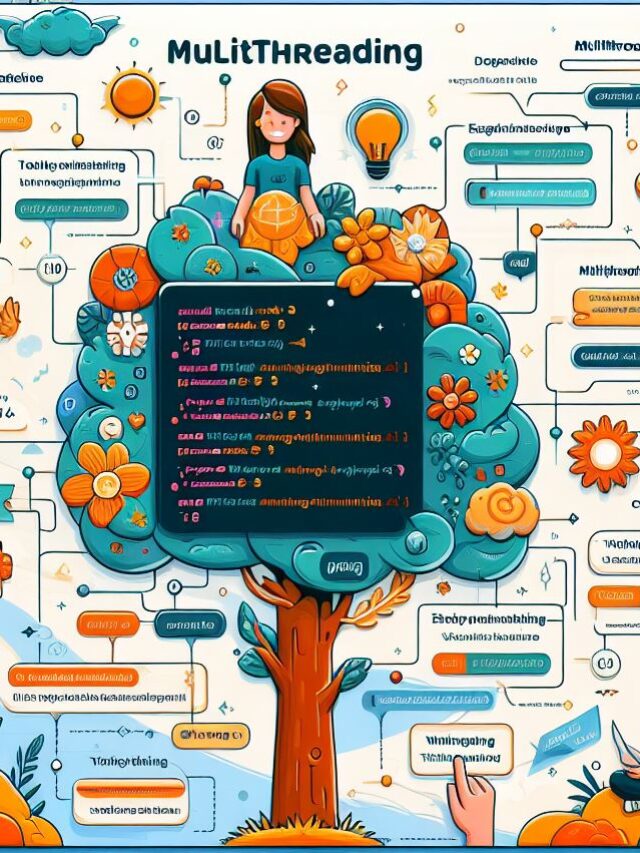Java, a widely used programming language, is continually evolving. One of the recent enhancements is the introduction of Unnamed Variables & Patterns. This feature can be quite handy, especially when you need to declare variables or nested patterns that are never used. Let’s dive into this exciting topic!
Table of Contents
What are Unnamed Variables & Patterns?
In programming, we often come across situations where we need to declare variables or patterns, but we don’t actually use them. This is where unnamed variables and patterns come into play. They are placeholders that allow us to structure our code without having to name every single element. this is new feature in JDK 22 release
Why are they useful?
Imagine you’re working on a complex piece of code with many variables. Some of these variables are essential to your program, while others are not. By using unnamed variables and patterns, you can keep your code clean and readable by avoiding unnecessary variable names.
How do they work?
Let’s consider an example. Suppose you’re working with a list of student grades, and you’re only interested in the highest grade. You might write a loop that looks something like this:
int highestGrade = 0;
for (int grade : grades) {
if (grade > highestGrade) {
highestGrade = grade;
}
}
In this loop, grade is a variable that we’re not actually using outside of the loop. It’s just a placeholder that allows us to access each element in the grades list. With unnamed variables, we could write this loop as follows:
int highestGrade = 0;
for (_ : grades) {
if (_ > highestGrade) {
highestGrade = _;
}
}
In this version of the loop, _ is an unnamed variable. It serves the same purpose as grade in the first version of the loop, but we don’t have to come up with a name for it. This can make our code cleaner and easier to read, especially in more complex programs.
Unnamed Variables
In Java, an unnamed variable is denoted by a single underscore _. This is a special identifier that you can use when you don’t care about the value of a variable. Here’s an example:
for (_ : grades) {
// We don't care about the individual grades
}
In this loop, we’re iterating over grades, but we’re not doing anything with each grade. The underscore _ tells Java that we don’t care about the individual grades.
Patterns
Patterns in Java are a way to test whether an object matches a certain structure. For example, you might want to check whether an object is a String of a certain length. Here’s how you could do that with patterns:
if (obj instanceof String s && s.length() > 5) {
// obj is a String longer than 5 characters
}
In this code, String s is a pattern that matches any String. The && s.length() > 5 part is a condition that further restricts the pattern to only match Strings longer than 5 characters.
Unnamed Patterns
Unnamed patterns combine the concepts of unnamed variables and patterns. They allow you to test whether an object matches a certain structure, without having to name the object. Here’s an example:
if (obj instanceof String _) {
// obj is a String, but we don't care about its value
}
In this code, String _ is an unnamed pattern that matches any String. Since we’re using an underscore _, we’re telling Java that we don’t care about the value of the String.
Practical Applications
Simplifying Code
One of the main benefits of unnamed variables and patterns is that they can simplify your code. By using an unnamed variable, you can avoid having to come up with a name for a variable that you don’t actually need. This can make your code easier to read and understand.
Enhancing Readability
When you’re working with complex code, readability is key. Unnamed variables and patterns can enhance the readability of your code by reducing clutter. Instead of having to track multiple variable names, you can focus on the logic of your code.
Improving Efficiency
In some cases, using unnamed variables and patterns can improve the efficiency of your code. For example, if you’re working with a large data structure and you only need to access certain elements, you can use an unnamed variable to skip over the elements you don’t need.
Advanced Usage
While unnamed variables and patterns are a powerful tool, they should be used with care. In particular, you should avoid using unnamed variables in situations where it could make your code harder to understand. For example, if you’re working with a loop that iterates over multiple variables, using an unnamed variable could make it harder to understand what the loop is doing.
Future of Java
The introduction of unnamed variables and patterns is just one of the many ways that Java is evolving to meet the needs of modern programmers. As Java continues to develop, we can expect to see more features that make programming easier and more efficient.
Conclusion
Unnamed Variables and Patterns in Java are a recent enhancement to the language. They are used when variable declarations or nested patterns are required but not used. They simplify code, enhance readability, and can improve efficiency. Unnamed variables are denoted by a single underscore _, and they act as placeholders when the value of a variable isn’t important. Patterns are used to test whether an object matches a certain structure, and unnamed patterns combine these concepts, allowing us to test an object without naming it. These features should be used with care to avoid making code harder to understand. They represent part of Java’s ongoing evolution to meet the needs of modern programmers.
Unnamed variables and patterns are a powerful tool in Java programming. They allow us to write cleaner, more readable code by eliminating the need for unnecessary variable names. So next time you find yourself declaring a variable that you don’t actually need, consider using an unnamed variable instead!
JDK 22 has many more features and improvements. For a complete understanding, you may want to refer to the official JDK 22 documentation.













